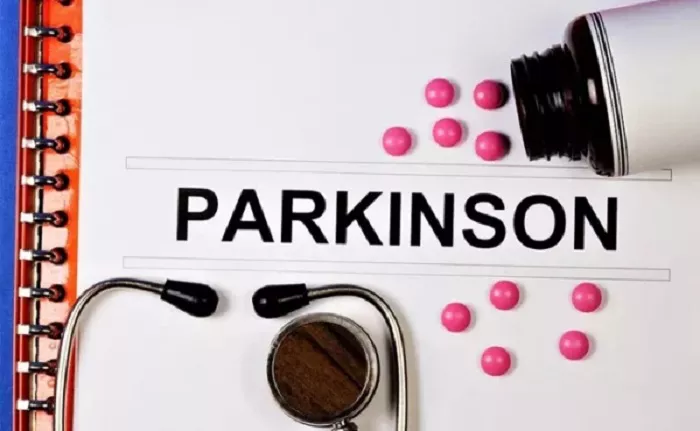For many people with sleep apnea, using a continuous positive airway pressure (CPAP) machine can feel uncomfortable. But a new study suggests that this device might protect brain health and reduce the risk of Parkinson’s disease.
The study, based on preliminary data released on March 2, found that starting CPAP treatment within two years of an obstructive sleep apnea (OSA) diagnosis could lower the chances of developing Parkinson’s. The findings will be presented at the American Academy of Neurology’s annual meeting in San Diego from April 5-9, though the research has not yet been peer-reviewed.
Growing evidence shows a connection between sleep apnea and Parkinson’s disease. About 40% of people with Parkinson’s also have sleep apnea. “Our study found an increased risk of Parkinson’s, but the good news is that people can take action by using CPAP soon after their sleep apnea diagnosis,” said Dr. Gregory Scott, the study’s lead author and a physician at the Veterans Affairs Portland Health Care System.
Around 30 million Americans are estimated to have OSA, but only 6 million have been diagnosed. Even among those diagnosed, most don’t use CPAP machines long-term. Experts say this new research highlights the importance of treating sleep apnea early to protect against neurological and other health risks.
How CPAP Use Might Lower Parkinson’s Risk
OSA occurs when the airway is blocked during sleep, making it hard to breathe and reducing oxygen levels. This can cause snoring, gasping, and other symptoms. A CPAP machine helps by pushing air into the airways through a mask, keeping them open.
To explore how CPAP use might affect neurological health, researchers analyzed 20 years of medical records from over 1.5 million U.S. veterans with OSA. They compared this data to records from 9.7 million veterans without the condition. After adjusting for factors like age, sex, and smoking, the team found 1.8 more cases of Parkinson’s per 1,000 people in the OSA group compared to the non-OSA group.
The researchers then focused on the 10% of OSA patients who used CPAP machines. They divided these patients into two groups: those who started CPAP treatment within two years of diagnosis and those who started later. People who began CPAP treatment late had a similar Parkinson’s rate to those who didn’t use CPAP at all. However, those who started CPAP early had 2.3 fewer Parkinson’s cases per 1,000 people compared to non-CPAP users.
The study authors concluded that OSA might be a modifiable risk factor for Parkinson’s disease.
The Link Between Sleep Apnea and Parkinson’s
While there’s evidence connecting sleep apnea and Parkinson’s, experts aren’t sure if sleep apnea increases Parkinson’s risk—or if it’s the other way around. “Whether sleep apnea raises Parkinson’s risk isn’t clear,” said Dr. Marta Kaminska, a Parkinson’s researcher at McGill University. “But some studies show that people with sleep apnea are more likely to be diagnosed with Parkinson’s later.”
Sleep apnea reduces oxygen levels, disrupts sleep, and can cause oxidative stress, inflammation, and brain changes. These factors might indirectly affect brain proteins linked to Parkinson’s. On the other hand, Parkinson’s itself can cause sleep problems, which might lead to a sleep apnea diagnosis before Parkinson’s is identified.
“Sleep apnea is common in older adults, so it’s hard to tell if it’s caused by Parkinson’s or just aging,” said Dr. Sonia Ancoli-Israel, a sleep apnea researcher at the University of California, San Diego. For people with both conditions, sleep apnea can worsen motor and cognitive decline, increase daytime sleepiness, and raise the risk of heart and brain diseases.
Why Treating Sleep Apnea Matters
Sleep apnea is linked to many health problems, including type 2 diabetes, stroke, heart attack, and dementia. Treating it is crucial. While CPAP is the most recommended treatment, other options include surgery, positional therapy, and nerve stimulation.
“CPAP can completely correct sleep apnea,” said Kaminska. However, many people find CPAP machines uncomfortable due to issues like mask discomfort, air leaks, or claustrophobia. Studies show that only 34% of OSA patients use their CPAP machines for seven hours a night, with overall adherence ranging from 30% to 60%.
“CPAP needs to be used every night for the best results,” said Ancoli-Israel. “Finding the right mask is key to comfort.” Even partial use can help, but consistent treatment is ideal.
Beyond CPAP, lifestyle changes like exercise, a healthy diet, quitting smoking, and limiting alcohol might also reduce Parkinson’s risk. If you suspect you have sleep apnea, see a healthcare provider for diagnosis and treatment as soon as possible.
“Sleep apnea should always be treated early,” said Ancoli-Israel. “We know it increases Alzheimer’s risk, so it might do the same for Parkinson’s.”
Simplified Key Takeaways
Early CPAP use (within two years of OSA diagnosis) may lower Parkinson’s risk.
Sleep apnea and Parkinson’s are linked, but the exact relationship is unclear.
Treating sleep apnea is critical for overall health and may protect brain function.
CPAP is effective but underused due to comfort issues; other treatments are available.
Lifestyle changes and early treatment are key to reducing health risks.
Related topics:
- Scientists Uncover How Protein Malfunction Leads To Parkinson’S Disease
- Rising Parkinson’S Disease Rates And Early Warning Signs To Watch For
- Parkinson’s Cases Set to Double by 2050, Reaching 25 Million Worldwide


